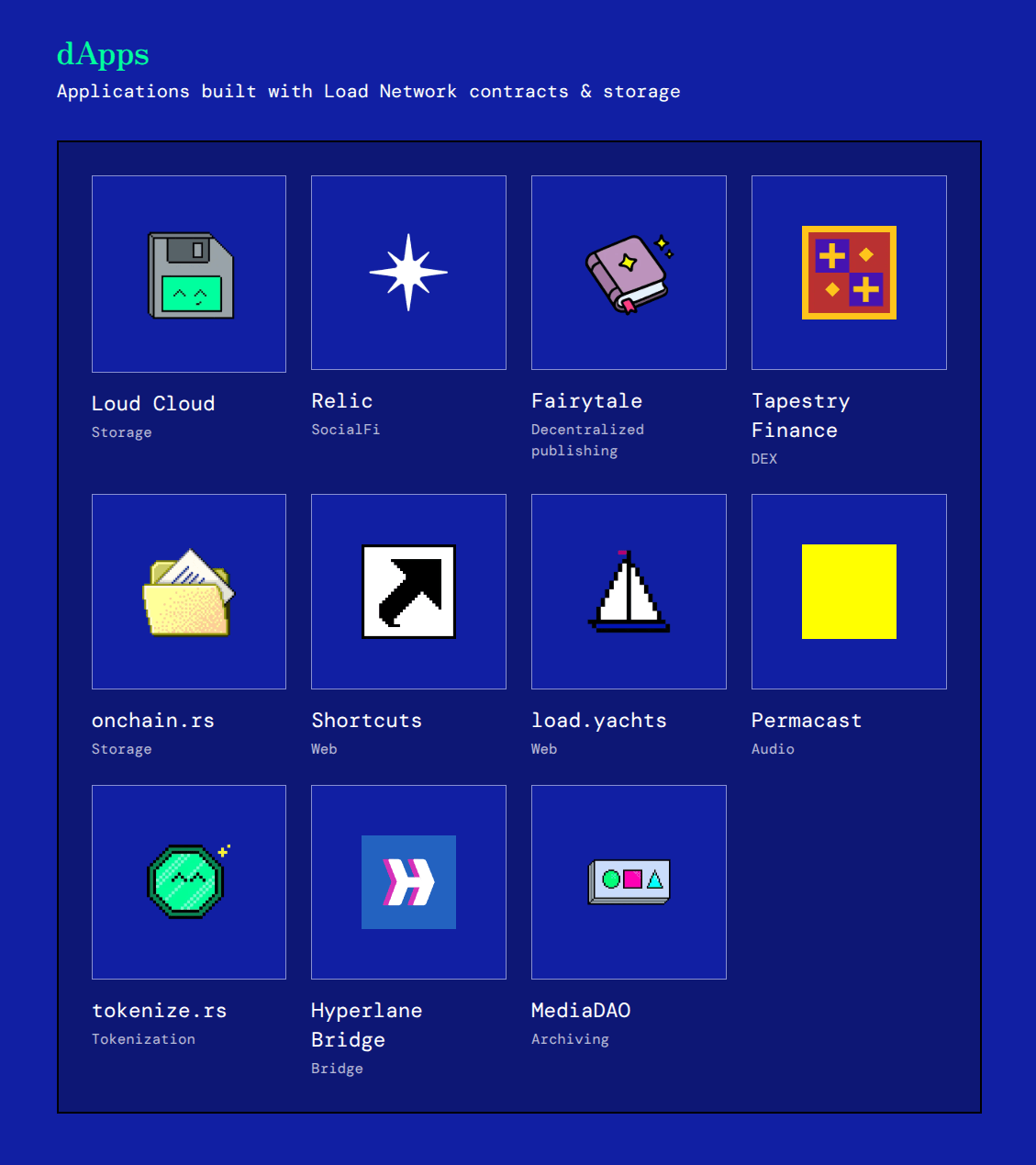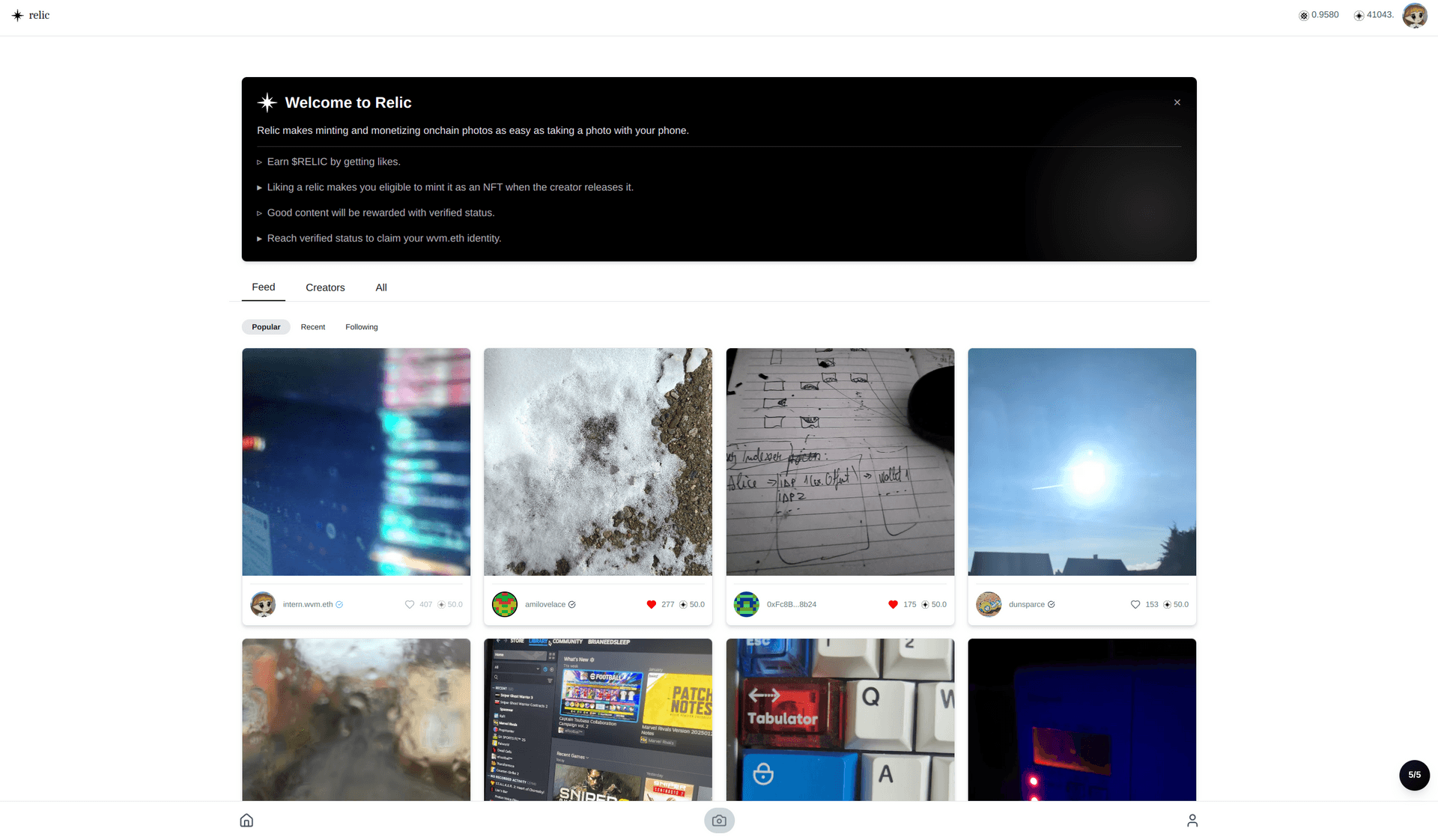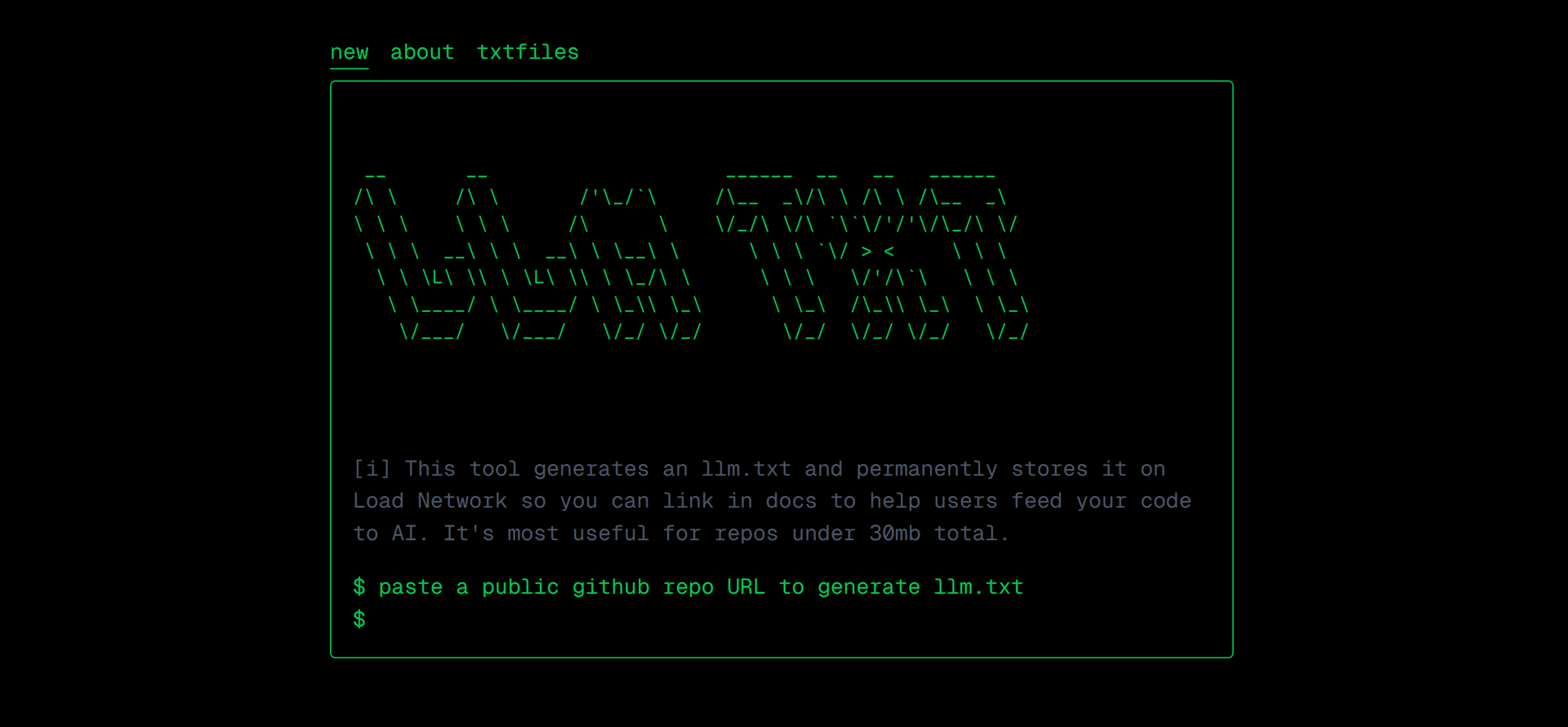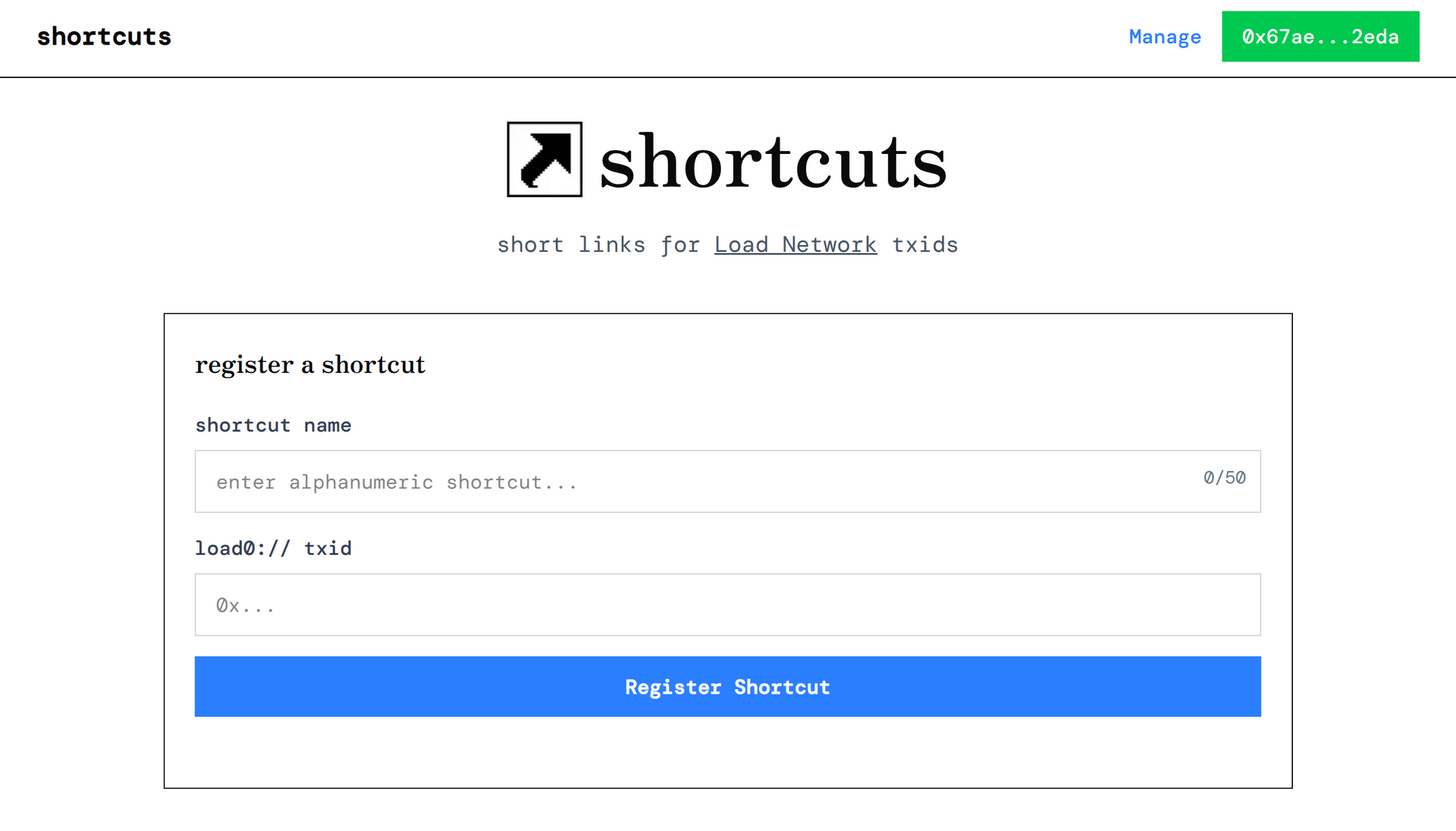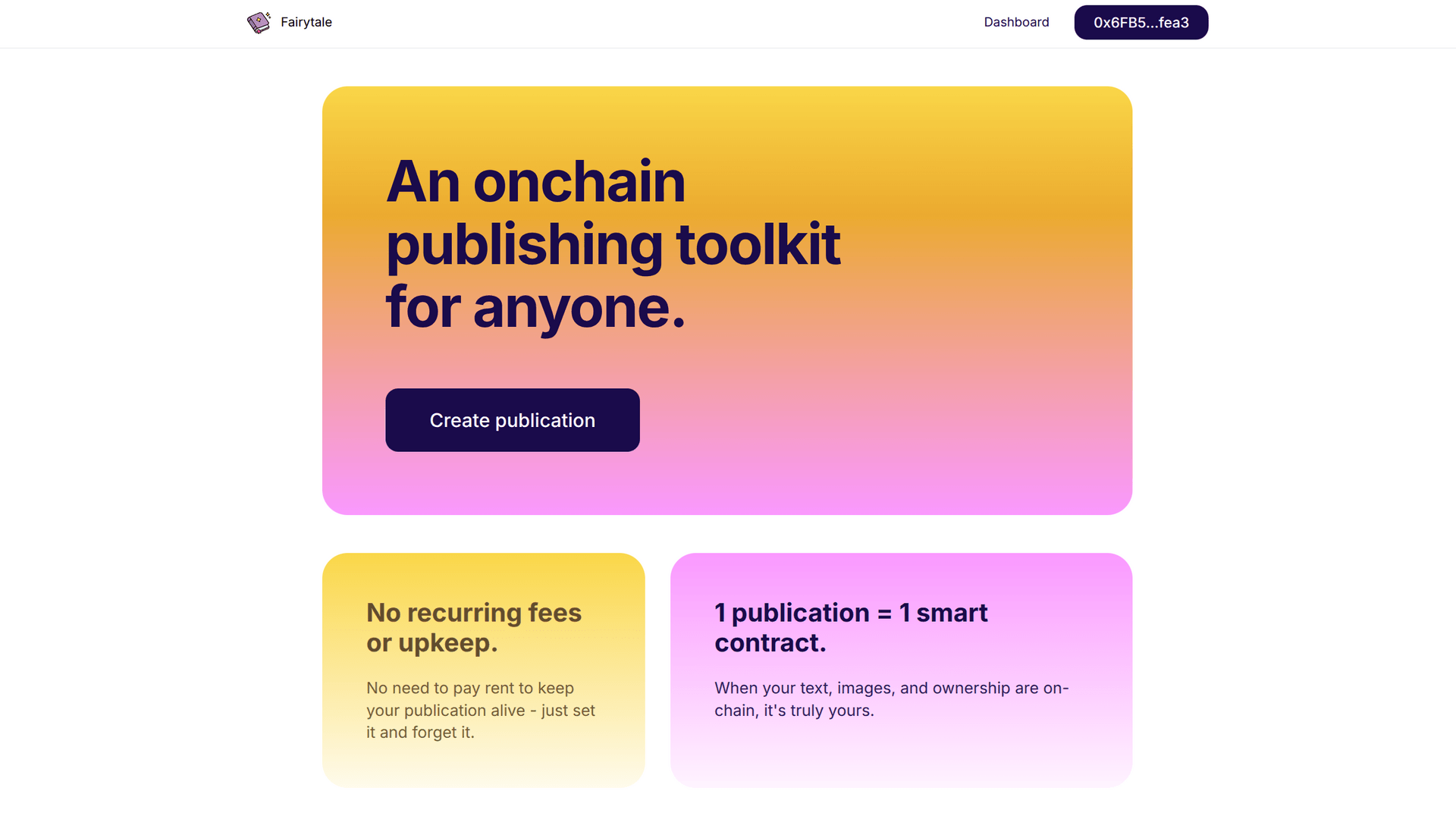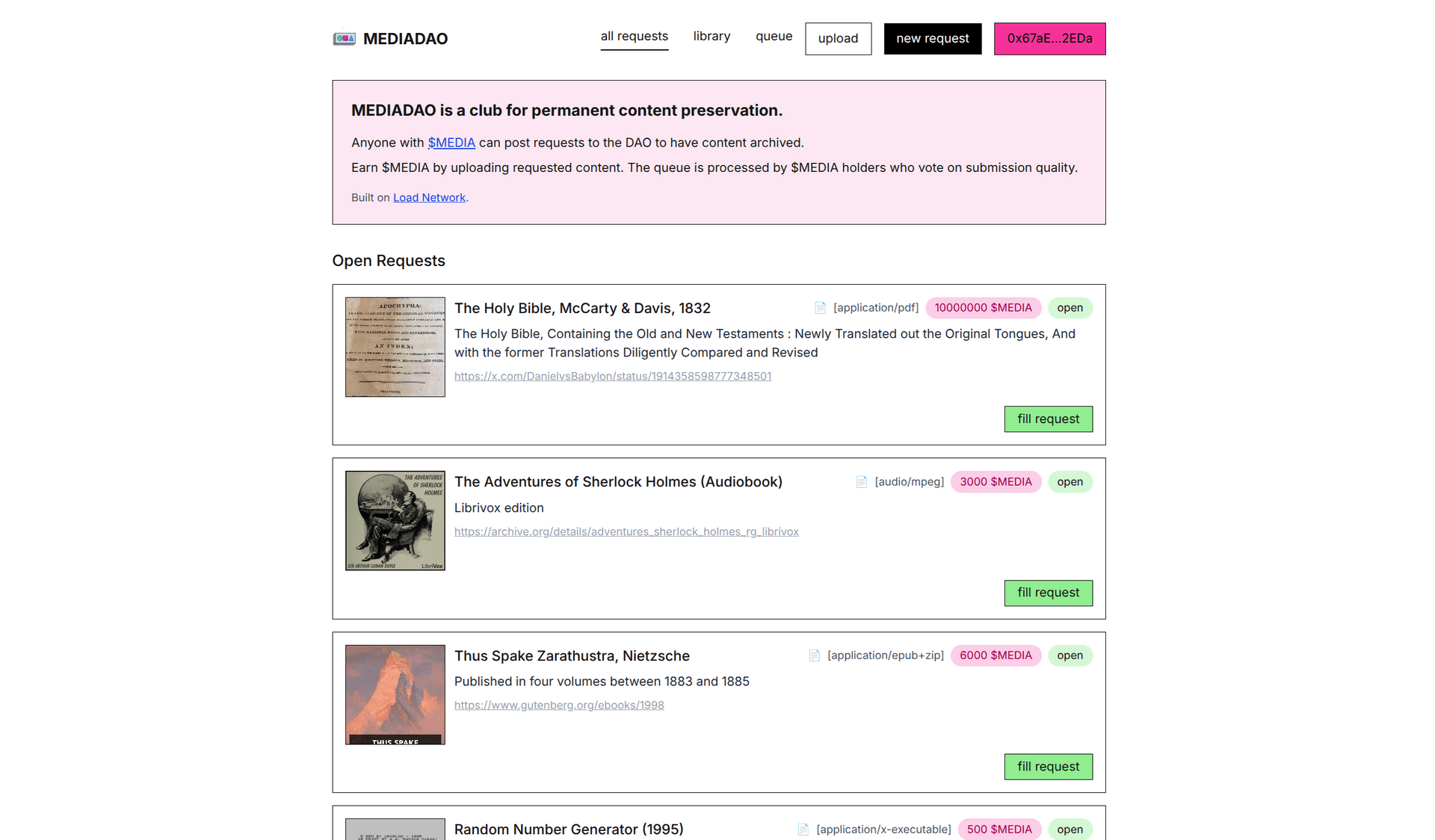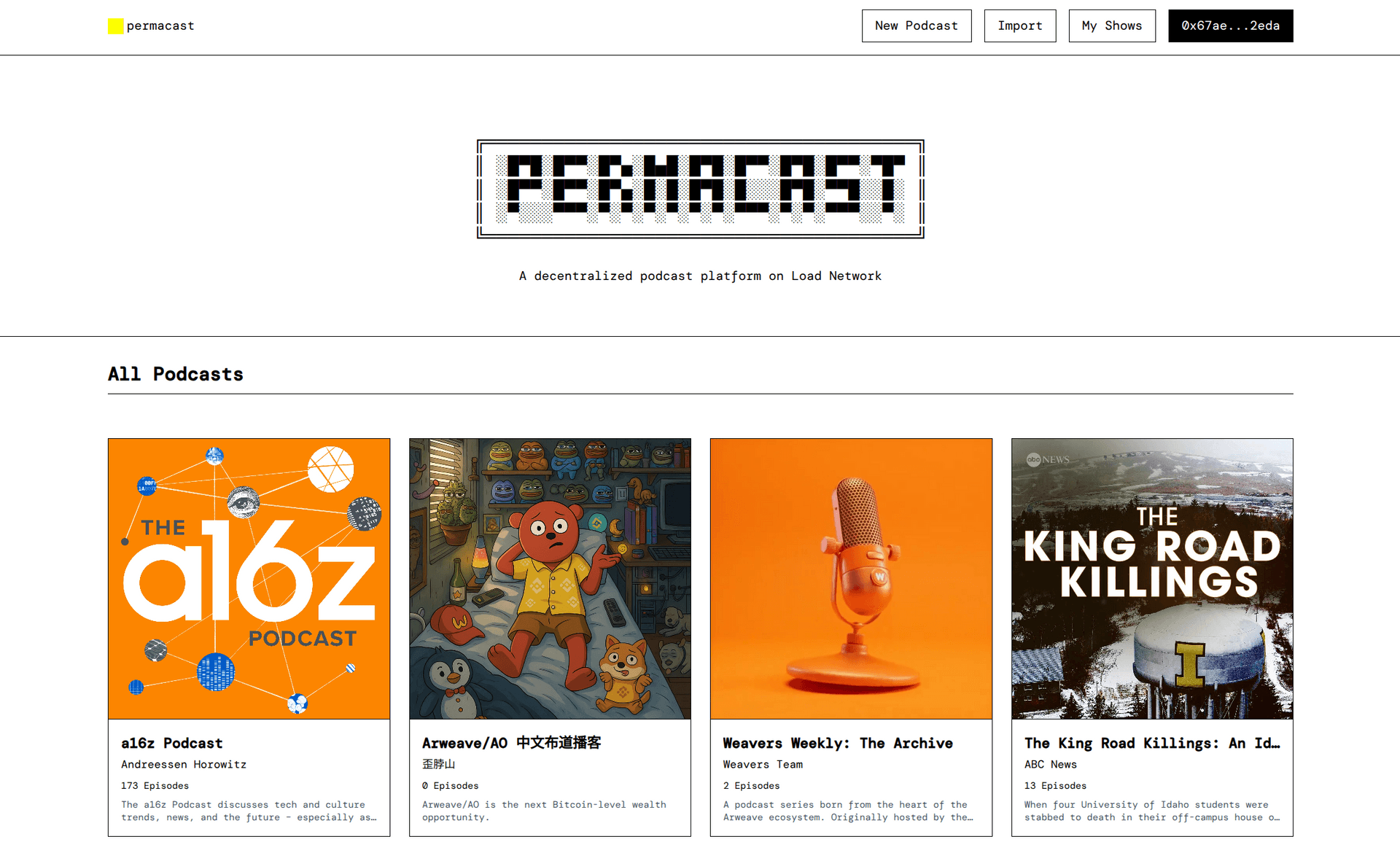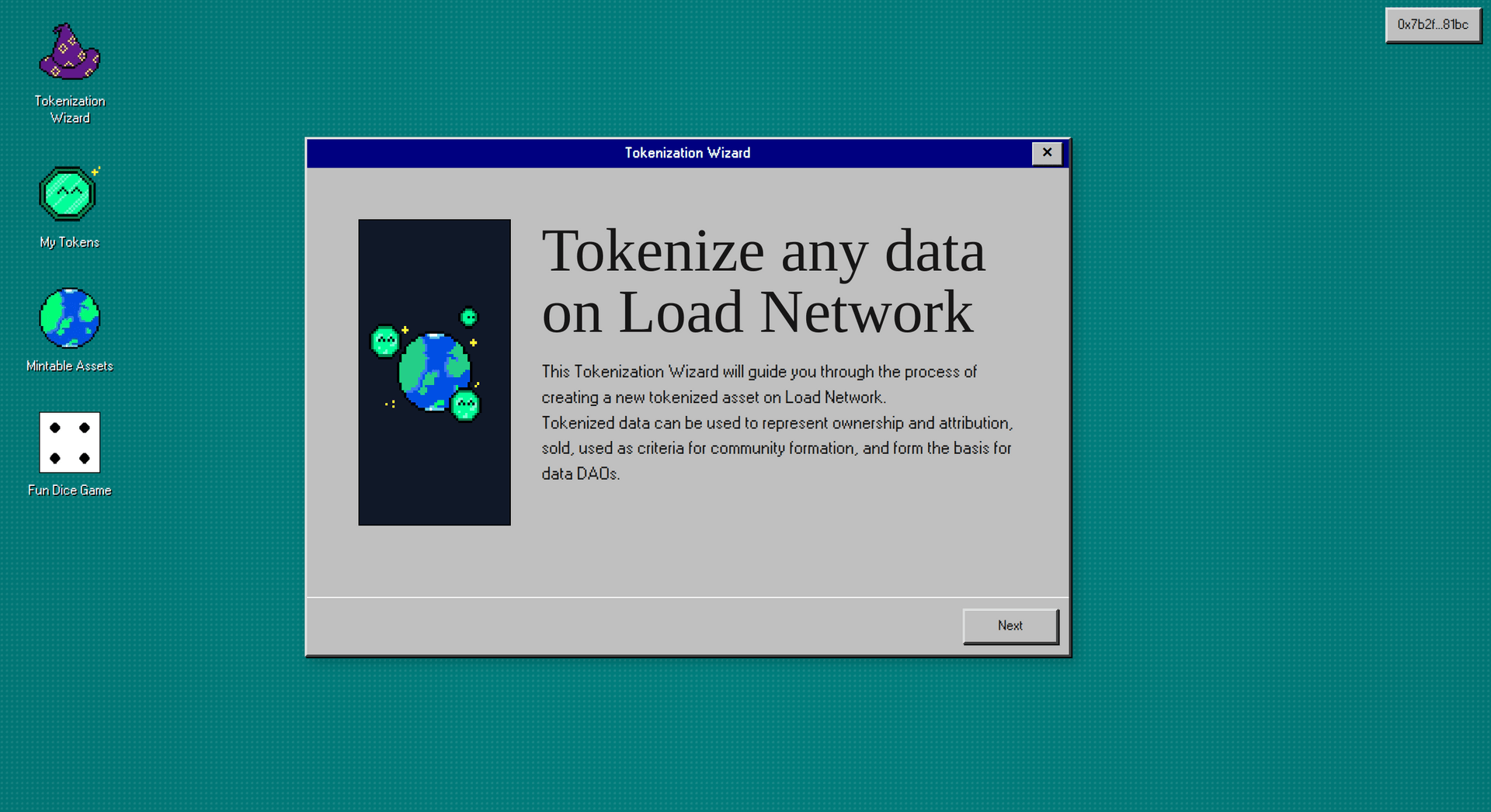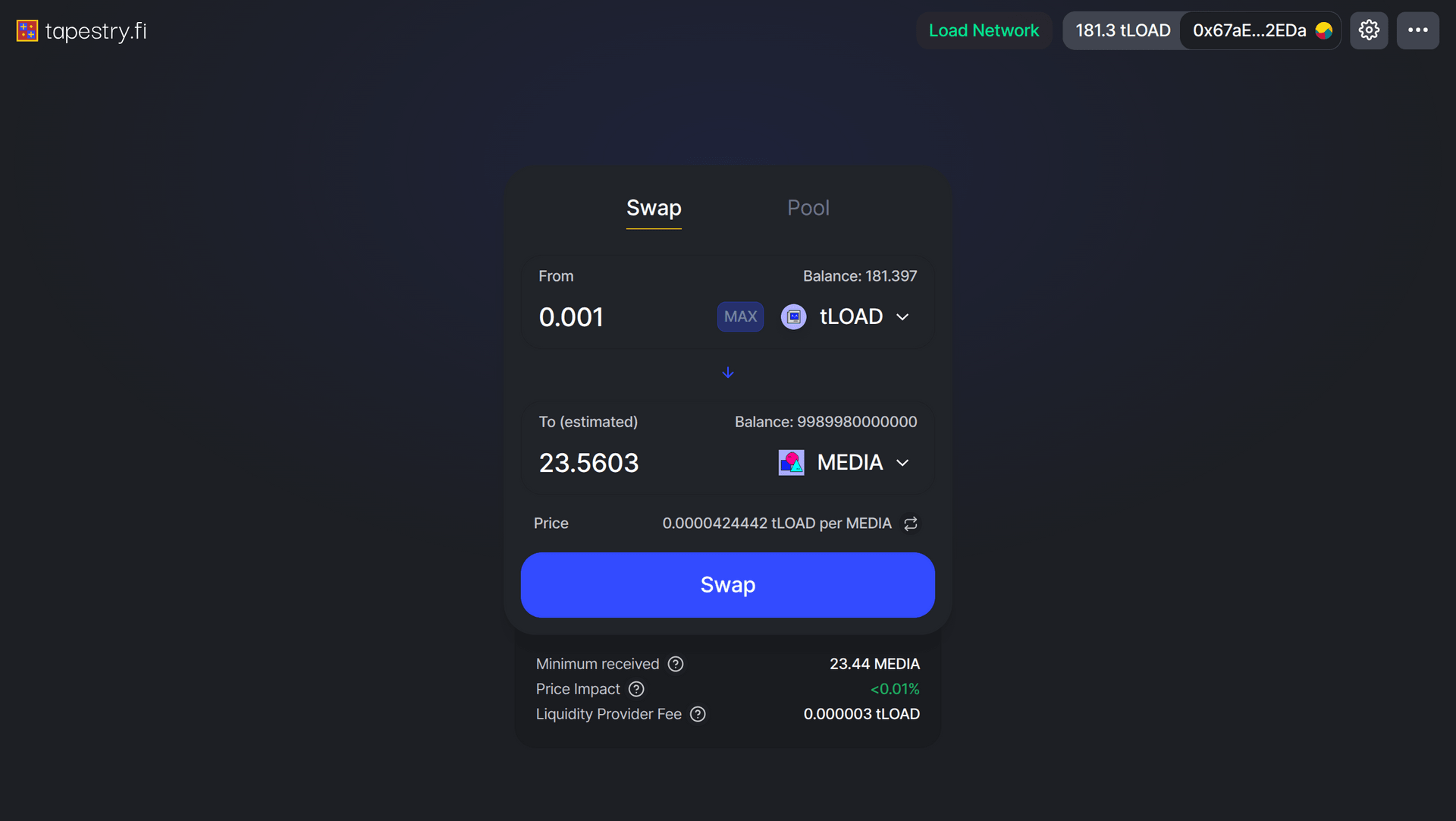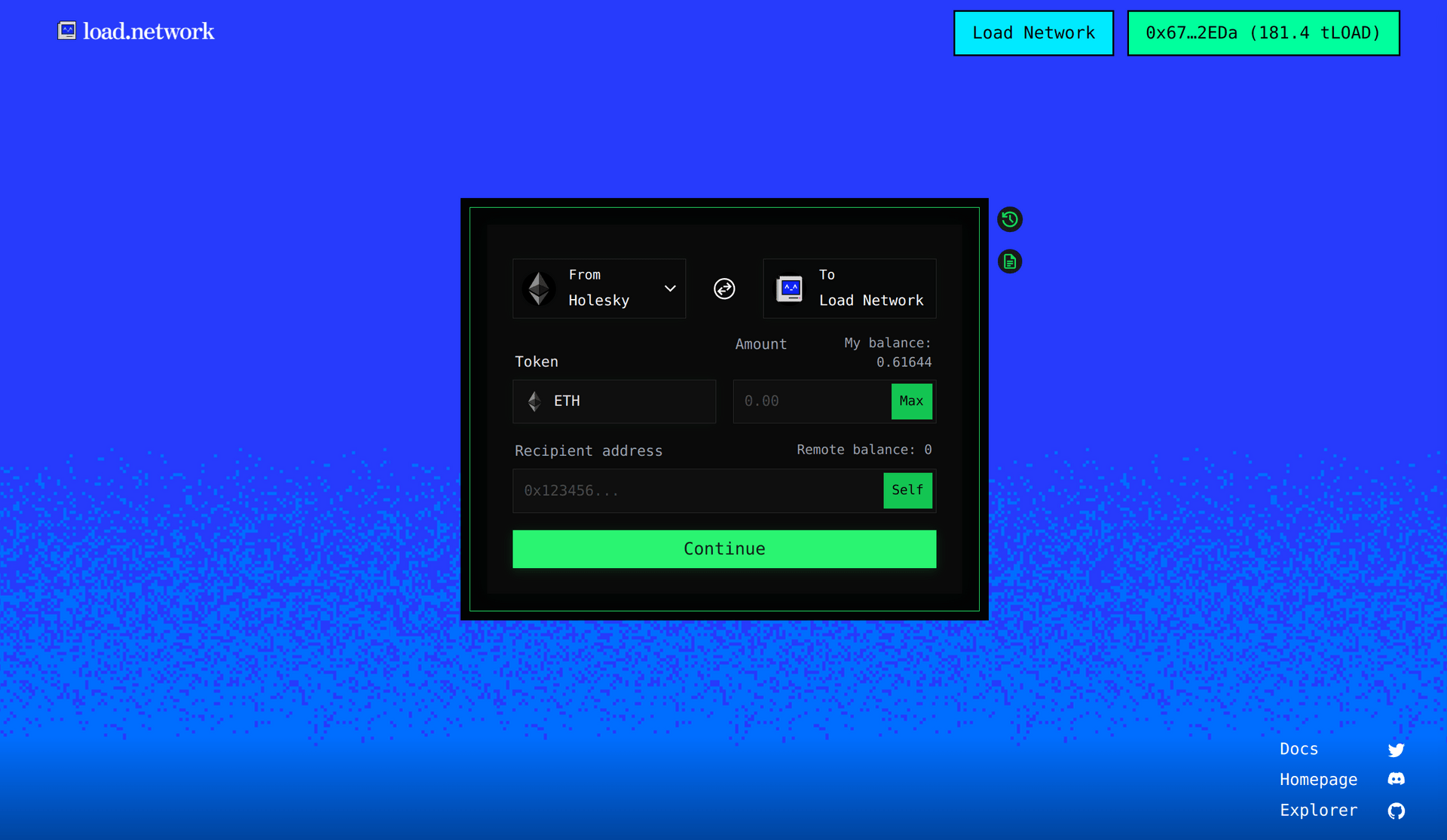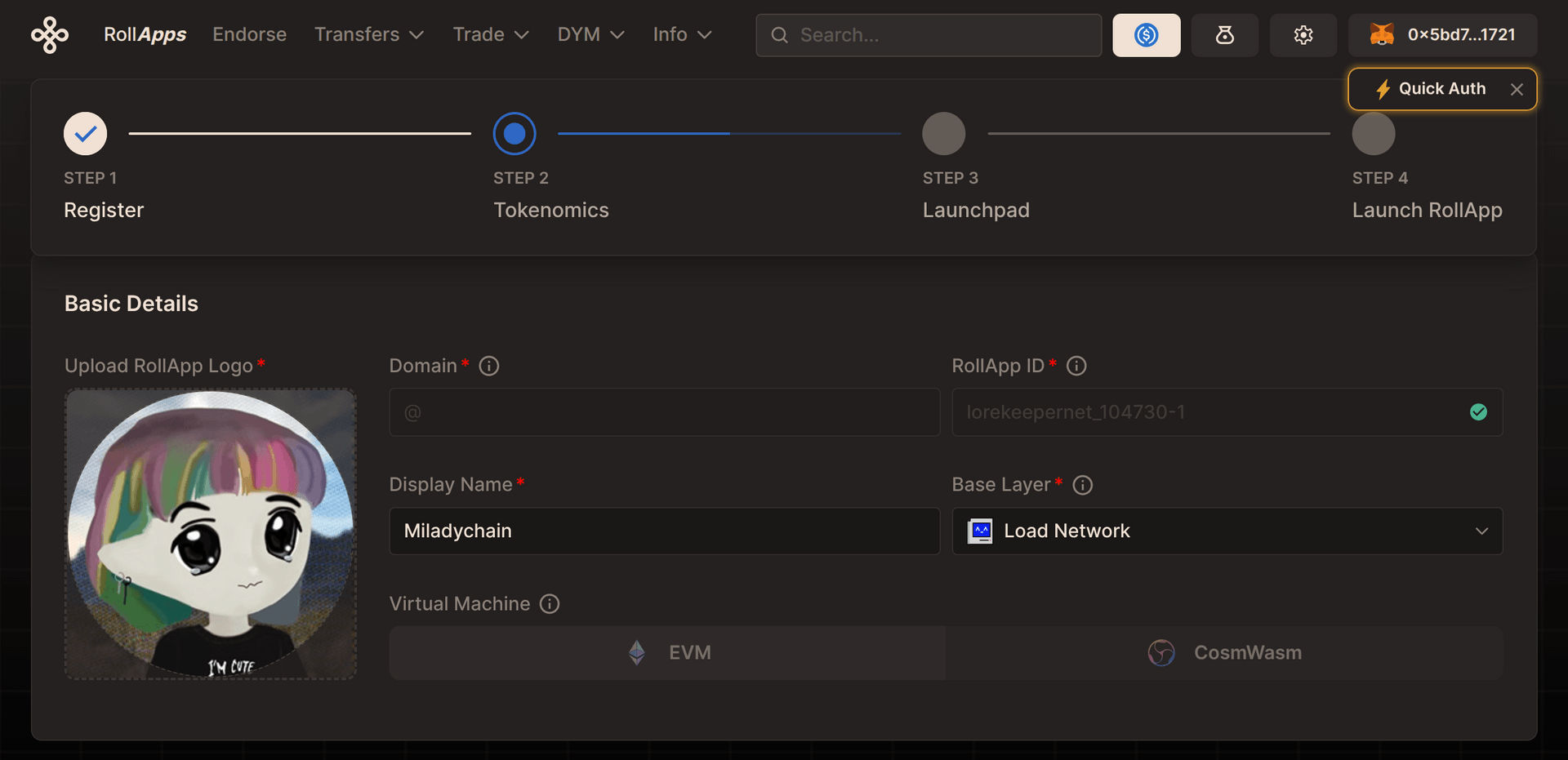Updating the Load Network ecosystem page made us realize how much it has grown since Q1. On the dApp side alone, we’ve seen 8 new deployments since February, with thousands of retained users.
From storage solutions and social platforms to DeFi primitives and developer tools, the onchain data center is becoming a comprehensive ecosystem for dApps with permanent storage as a core need.
In this post, we’ll break down the global stats and new ecosystem players to give you a picture of the Load Ecosystem this quarter.
By the numbers
- ~14,000,000 transactions in Alphanet V4
- 321 GB of ledger state settled from:
- Avalanche
- Metis
- Monad
- GOAT
- Dymension
- Humanode
- Phala
- RSS3
- Scroll
- 378,659 Ethereum blobs immortalized
- ~4,000 MAU across Load Network dApps
- 11 dApps on Load Network (+8 in the last 60 days)
dApps Building on Load Network
Relic: Mobile-First Onchain Media
Relic was the first consumer app on Load Network, a mobile app allowing users to publish photos onchain directly from their phones. The app stores photos as EVM calldata in bundled transactions, with both smart contracts and data 100% on Load Network. This shows the power of permanent storage for everyday social content and opens the door for permanent user-owned media on the EVM.
Since its launch on January 24th, 2025, Relic rapidly gained traction with over 2,000 users signing up and sharing photos in just the first two weeks and 4,000 retained to date. The platform’s simple concept has resonated with users:
- Take photos with the app to publish them permanently onchain
- Earn $RELIC tokens by receiving likes on content
- Liking a “relic” (photo) makes users eligible to mint it when the creator releases it
- Quality content is rewarded with verified status through a viral vouching system
The app has implemented significant technical improvements to handle its growth, including an indexer to power the home feed and image caching from Load Network to improve loading speeds and reliability. Relic uploads now go through a dedicated bundling service using Load’s bundler-upload-sdk, enhancing reliability for users.
What makes Relic particularly notable in the Load ecosystem is how it demonstrates that consumer-friendly applications can be built entirely onchain without sacrificing user experience. By combining permanent storage with social mechanics and a token economy, Relic shows how web3 infrastructure can support everyday use cases that previously relied on centralized platforms.
onchain.rs: simple, frictionless onchain storage
Inspired by the venerable permaweb-dropper, onchain.rs is a simple UI to store content onchain, powered by Load bundles. What makes onchain.rs special is its walletless, free experience, complete with a gateway that can render common browser-compatible file types. This makes it extremely quick to push any file onchain and share the link. You shouldn’t have to use a CLI or write code to get permanent storage, so sometimes the simplest apps are the most useful.
llmtxt.xyz: generate AI-friendly code helpers
llmtxt.xyz flattens GitHub repositories into single text files, stores them permanently on Load Network, and provides short URLs that AI assistants can use to fetch the content. This solves a key problem for developers working with AI tools: providing complete context about codebases without manual explanation or file-by-file sharing. And, it ensures that the state of any repo they capture is stored onchain forever.
curl https://www.llmtxt.xyz/g/alloy-rs/alloy/0
This gives AI tools full visibility into project structure, conventions, and implementation details, dramatically improving their ability to provide relevant assistance. The /txtfiles section of the platform is a library of repositories already converted to the llm.txt format.
Shortcuts: create permanent shortlinks for Load content
Shortcuts is a decentralized registry that maps easy-to-remember names to transaction IDs on the LOAD network. Each shortcut points to a specific transaction ID, allowing users to access transaction content without remembering long hexadecimal strings.
For example, shortcuts.bot/whitepaper can redirect to a lengthy Load transaction ID that contains the actual whitepaper content, making onchain content much more accessible for everyday use.
load.yachts: resolve Load shortcuts
Building on the Shortcuts infrastructure, load.yachts provides an elegant way to host and share content stored on the Load Network through human-readable URLs.
At the core of load.yachts is a self-hostable resolver – load.yachts is just an example deployment. Anyone can deploy a resolver that reads from the same master registry on shortcuts.bot.
The workflow is simple:
- Upload content to cloud.load.network
- Get a transaction ID (txid) for your content
- Create a shortcut at shortcuts.bot
- Access your content via your-shortcut.load.yachts
This system works for HTML websites, documents, images, and any other media, offering three key benefits:
- Simplicity: Human-readable URLs instead of complex transaction IDs
- Permanence: Content on Load is persistent and immutable
- Decentralization: No central point of failure for content hosting – resolvers are self-hostable
Instead of accessing content through a complicated URL like https://load0.network/resolve/0x01337c8076a3ba310cc1a22a0e75ca9be0b0bf4f696793c64f145410502ae4a3…
users can simply use whitepaper.load.yachts or load.yachts/whitepaper.
Fairytale: Decentralized Publishing
Fairytale is a return to the DIY blog era, but with the permanence of blockchain storage. The platform provides an onchain publishing toolkit where each blog equals one smart contract. Unlike free or paid hosting services, Fairytale users have full ownership of their content with no recurring bills, terms and conditions, or price hikes.
Built on Load Network smart contracts and storage, every publication is its own contract that only its creator can write to and no one can censor. Each post is stored as EVM calldata on Load, ensuring immutable preservation onchain. The platform allows anyone to create a publication in minutes without technical skills or web3 knowledge.
MediaDAO: Collective Content Preservation
Inspired by private tracker forums in the golden days of torrenting, MediaDAO aims to make content preservation an active, incentivized community effort, replacing web2 reputation gains with tokens.
MediaDAO is a content preservation club for archiving digital and physical content permanently. Built on Load Network, anyone with $MEDIA tokens can post requests to archive important content that might otherwise be lost to time.
In a world where websites disappear daily, social media platforms shut down, and even physical media deteriorates or becomes increasingly rare, MediaDAO creates economic incentives around preservation by allowing users to earn $MEDIA tokens by uploading requested content, with the submission quality verified through votes by token holders.
Permacast: Permanent Podcasting
Permacast offers a way to upload podcasts to Load Network for permanent storage. Users can import any podcast from RSS and immortalize it onchain, all powered by Load Network smart contracts and storage. This ensures that podcast content remains accessible regardless of the status of traditional hosting platforms.
Permacast is also integrated with tokenize.rs to make it possible to turn episodes into tokens – a way for clubs to form around creators, and for creators to monetize their audience base. Once ownership is onchain, the door is open for exclusive rewards, sophisticated gating, and other things which web2 doesn’t naturally do well.
tokenize.rs: Data Tokenization Platform
Load Network combines the best properties of both Arweave and the EVM: permanent data storage at any scale, robust asset standards, and EVM compute. This makes it the ideal environment for building atomic assets in the EVM.
Tokenize.rs enables users to add ownership and scarcity to onchain data. The simple flow allows anyone to give any existing Load transaction ID a title, edition count, and price, making it discoverable through the tokenize.rs UI and supported dApps in the Load ecosystem. A generic tokenize button can be added to any dApp that uses Load storage, allowing uploads to be turned into assets in seconds.
DeFi Infrastructure
Even though Load focuses on data storage, blockchains are financial instruments. Combining money and data unlocks capabilities that are out of reach for developers using web2 stacks. Read more on the full picture here.
Tapestry Finance: Load’s DEX
Tapestry.fi is Load Network’s Uniswap V2. Built on Load Network’s 500 mgas/s performance, users get a high-performance trading experience with 1-second finality and the robustness of a proven codebase. The platform demonstrates that Load’s high bandwidth (3.3x Monad, 16.6x Base) is ideal for financial use cases where speed and user experience matter.
Hyperlane: Load’s bridge
The bridge.load.network service, powered by Hyperlane, allows assets to move bidirectionally between Load’s Alphanet V4 and Ethereum Holesky. Currently supporting Holesky ETH, the bridge will soon add support for the network’s USDL stablecoin.
USDL: Load’s stablecoin
In partnership with Astro Labs, Load Network has deployed USDL—a full-stack stablecoin infrastructure with built-in ecosystem monetization. What sets USDL apart from conventional stablecoins is its dual focus on stability and ecosystem value capture. Backed by USDC, USDT, and DAI (with more assets supported later), USDL introduces the first significant TVL opportunity for Load Network.
The stablecoin creates predictable data storage costs for L1s, L2s, and data-intensive dApps while generating new revenue streams from storage and retrieval activities. Critically, yield from holding USDL can be diverted to incentivize any pool, protocol, or validator set on the network, creating a growth flywheel for the entire ecosystem.
Data Availability Solutions
Load Network DA is available in Dymension
Load Network partnered with Dymension to bring permanent storage and high-throughput DA to the RollApp ecosystem. This integration directly addresses key challenges faced by RollApp developers regarding historical data access in a truly decentralized way.
Previously, RollApp operators had to store genesis files in centralized storage and relied on DA layers for historical data, often requiring operators to rent or run custom nodes to serve their chain’s state after the DA expiry window. With frequent DA upgrades breaking backwards compatibility, this presented ongoing challenges.
The Load Network integration changes this dynamic:
- Permanent storage for RollApp data and genesis files on Load & Arweave
- High-speed data retrieval through decentralized gateways
- Support for files up to ~62MB with 1-second blocks (baselayer throughput, not counting bundles)
- Native payment options using DYM tokens
For developers, this means no more worrying about genesis file availability, reduced single points of failure through decentralized storage, faster validator syncs, and cost-effective permanence. The integration is straightforward, using standard eth-spec JSON-RPC endpoints with built-in support for proof of misbehavior in the DA client interface.
As the modular space matures, this partnership demonstrates how data permanence is becoming a necessary part of the stack, especially for permissionless decentralized L2s.
Infrastructure
Load Network Cloud Platform
The recently announced Load Network Cloud Platform provides storage integrated with tools users already know. Uploading data onchain becomes as simple as using Google Drive, but with the benefits of ownership, permanence, and developer utility.
Version 1 of the platform supports IPFS pinning services, user registration, and API key generation. This allows users to leverage IPFS just as they would with existing pinning services, but with the key differentiator that all data is permanently stored on Load Network while maintaining the IPFS API interface.
The next version will introduce AWS S3 API compatibility and a Dropbox-like service, both interfacing with Load storage under the hood while maintaining parity with the original API specifications. This creates zero engineering integration overhead—teams using S3 storage for critical data can switch to Load’s permanent high-throughput data with a simple config change.
Load0: High-Performance Data Uploads
Load0 is a toolkit for pushing data to Load Network with web2-like UX. It’s large bundles on steroids, offering a cloud-like experience to upload and download data from Load Network using the Bundler’s 0xbabe2 transaction format, powered with SuperAccount & cloud buckets.
The service works by sending data to the load0 REST API /upload endpoint. The data is pushed to load0’s cloud bucket and returns an optimistic hash (keccak hash), allowing users to instantly retrieve the object data. After being added to the load0 bucket, the object gets added to the orchestrator queue that uploads the optimistic cached objects to Load Network.
Compared to alternative solutions like Filecoin, where uploading 1GB can take 2-3 hours before it’s retrievable, the same operation on Load Network using Large Bundles takes only 20-60 seconds. With load0’s optimistic caching, data retrieval is instant after upload, with guarantees for the data to get seeded on Load Network in the background.
Coming next: Fibernet
As we prepare for mainnet, the upcoming Load Fibernet will bring an eightfold improvement in performance metrics, positioning the onchain data center as both a high-performance DeFi and dApp layer as well as infrastructure for other blockchains.
Fibernet will start life as an experimental testnet running in parallel with Alphanet V4, then transition to mainnet once proven stable. As well as performance upgrades, Fibernet will feature shared sequnecing with AO (hyperbeam), making it possible to natively call offload computation too complex for the EVM to hyperbeam. Stay tuned for a full article on this soon, and follow along on X, @useload.

